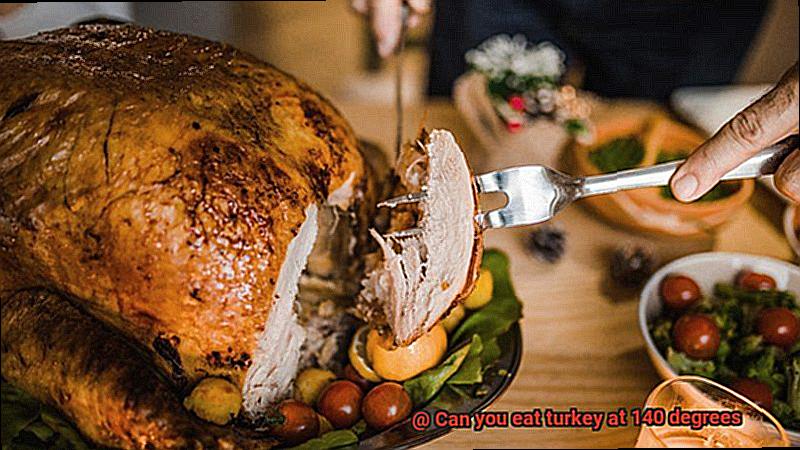As Thanksgiving approaches, it’s time to start thinking about the star of the show: the turkey. But with concerns around food safety on the rise, many are left wondering if it’s safe to eat turkey cooked at 140 degrees.
Some believe that cooking turkey at a low temperature is enough to kill harmful bacteria, but is that really the case? In this blog post, we’ll explore the science behind food safety and temperature standards to answer this question once and for all.
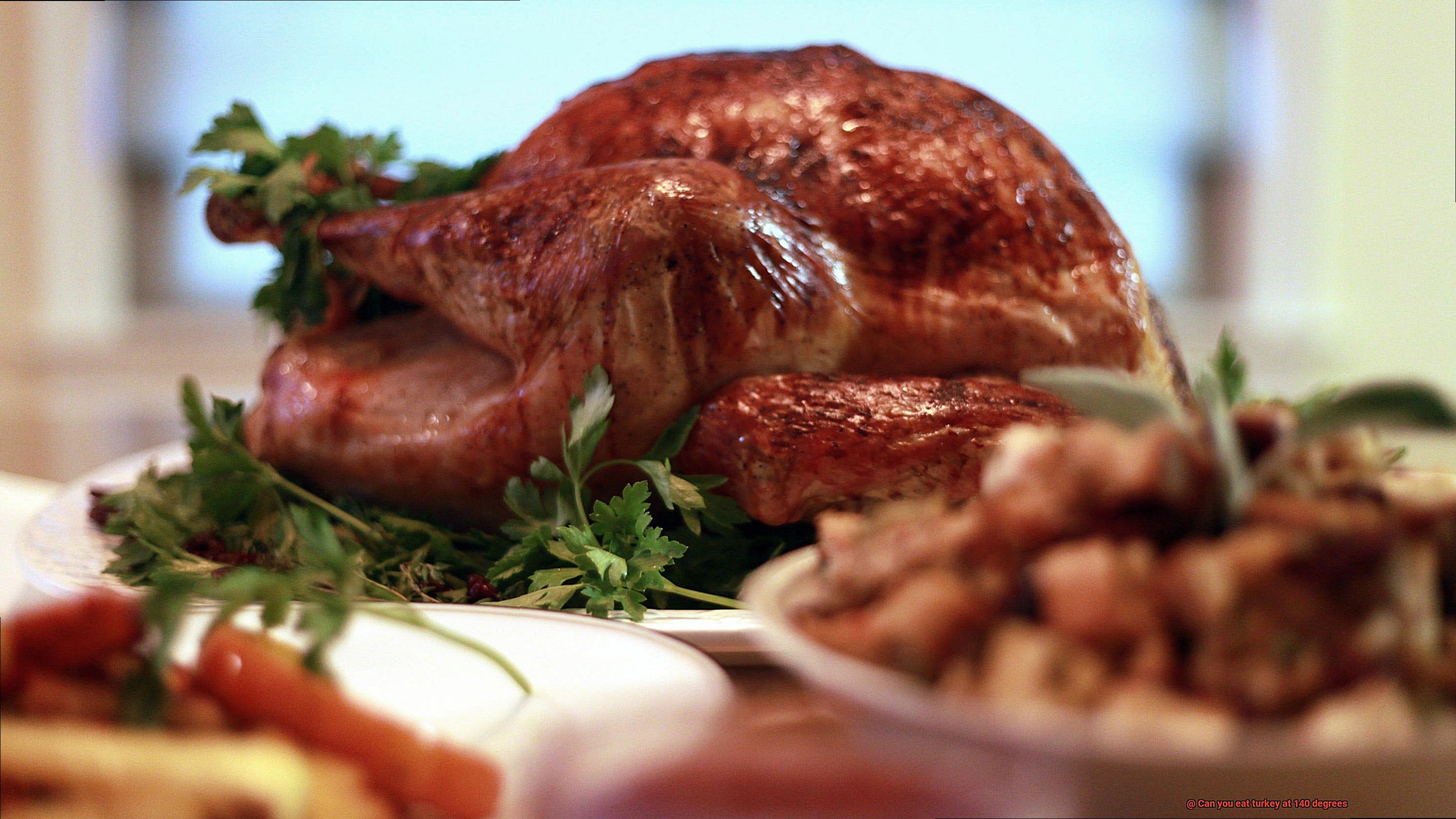
We’ll also discuss the risks associated with consuming undercooked turkey, such as food poisoning from Salmonella or Campylobacter. Trust us, you don’t want to spend your holiday in bed with a stomach ache.
But fear not, we won’t leave you hanging. We’ll share our top tips and tricks for cooking a succulent and safe turkey that will have your guests drooling. From cooking times to oven temperatures, we’ve got you covered.
Whether you’re an experienced Thanksgiving chef or a first-timer, this blog post is essential reading for all turkey lovers out there. Get ready to debunk some cooking myths and learn everything you need to know about cooking the perfect turkey for your next holiday feast.
Contents
What is the Recommended Temperature for Cooking Turkey?
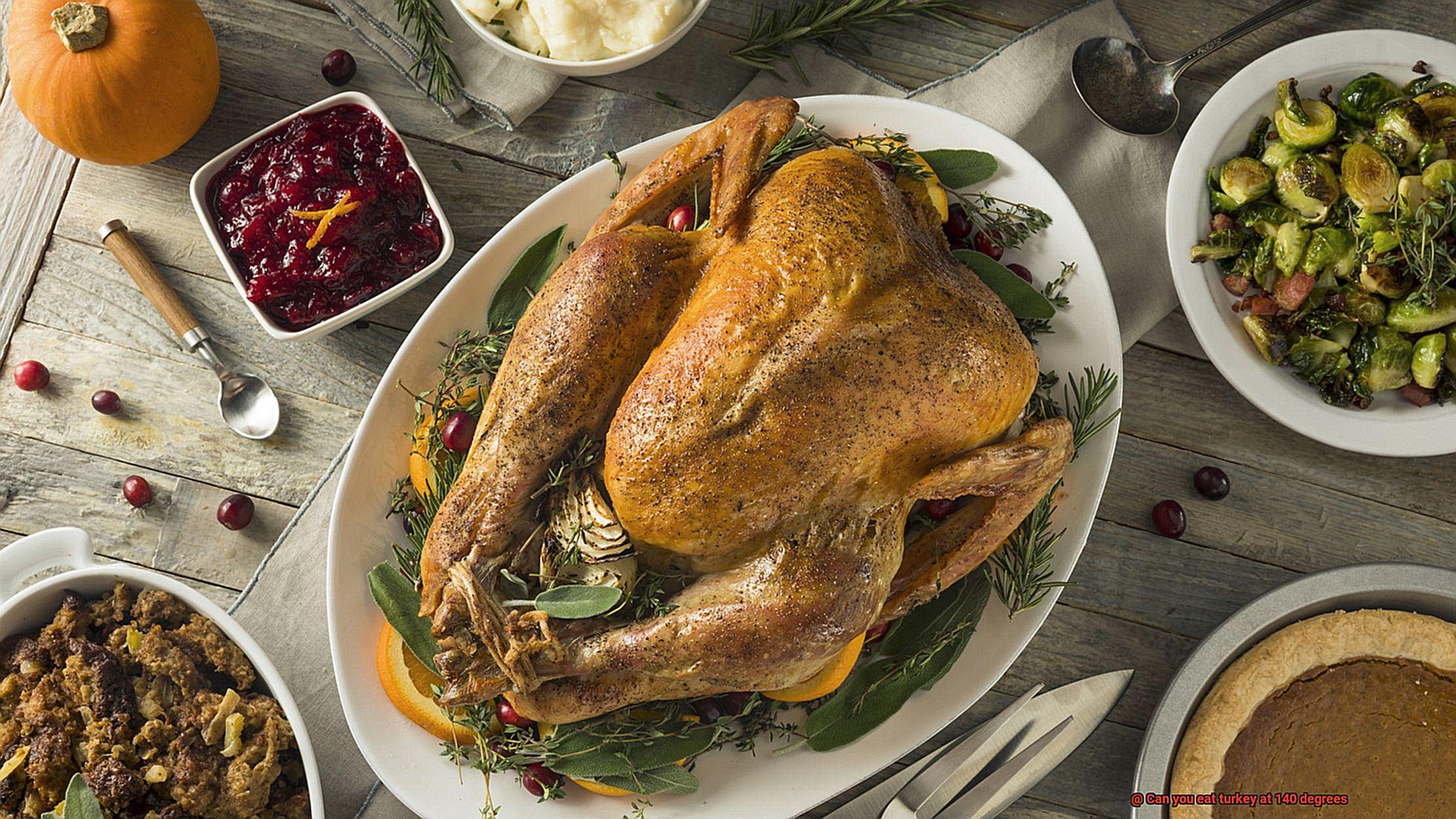
As the holiday season approaches, many of us are eagerly anticipating a bountiful Thanksgiving feast, complete with a succulent turkey at its center. But did you know that cooking your turkey to the appropriate temperature is of utmost importance to ensure safety and prevent foodborne illnesses?
According to the USDA, the recommended temperature for cooking turkey is 165 degrees Fahrenheit. This temperature is crucial in destroying harmful bacteria, such as Salmonella and Campylobacter, making the turkey safe to consume. To ensure that your turkey has reached this temperature, it’s essential to use a meat thermometer.
But why is it so important to follow this guideline? Consuming undercooked or improperly cooked turkey can lead to food poisoning, which can cause severe symptoms such as nausea, vomiting, diarrhea, and fever. In worst-case scenarios, it can even result in hospitalization or death. Therefore, ensuring that your turkey is cooked properly is not just about taste but also about safety.
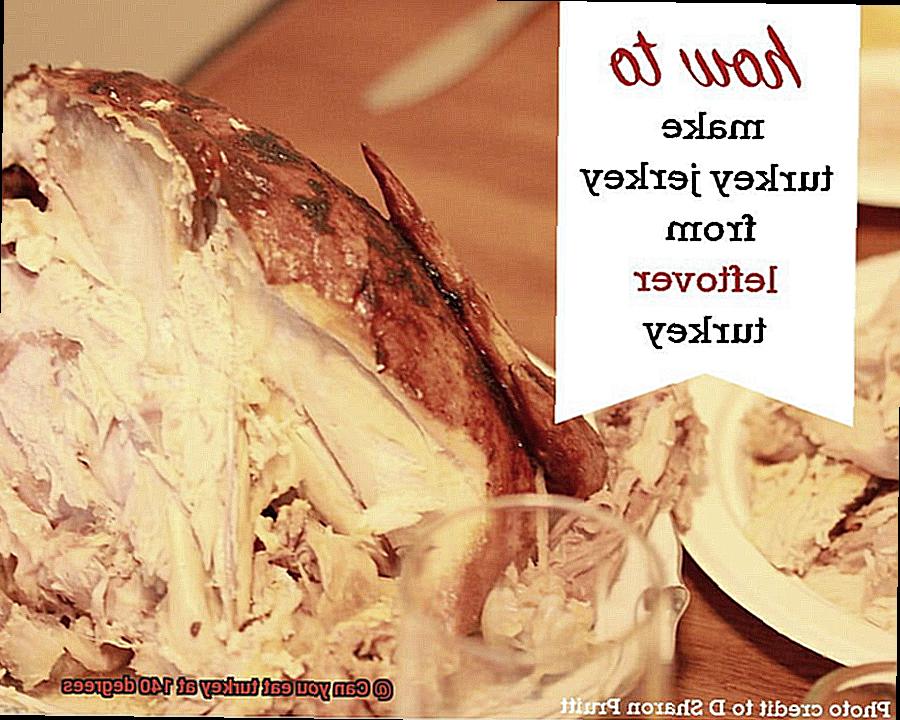
While the temptation to cook your turkey at lower temperatures for juicier meat may be strong, it’s crucial to resist it. Cooking your turkey at lower temperatures, such as 140 degrees Fahrenheit, may not destroy all bacteria and may even increase the risk of bacterial growth over time. The USDA recommends avoiding cooking your turkey at temperatures lower than 325 degrees Fahrenheit.
To ensure that your turkey is cooked safely and properly, use a meat thermometer to check its internal temperature. Insert it into the thickest part of the meat, such as the thigh or breast, without touching bone. Once the internal temperature reaches 165 degrees Fahrenheit, let it rest for at least 20 minutes before carving. This allows the juices to redistribute evenly throughout the meat and results in tender and juicy meat.
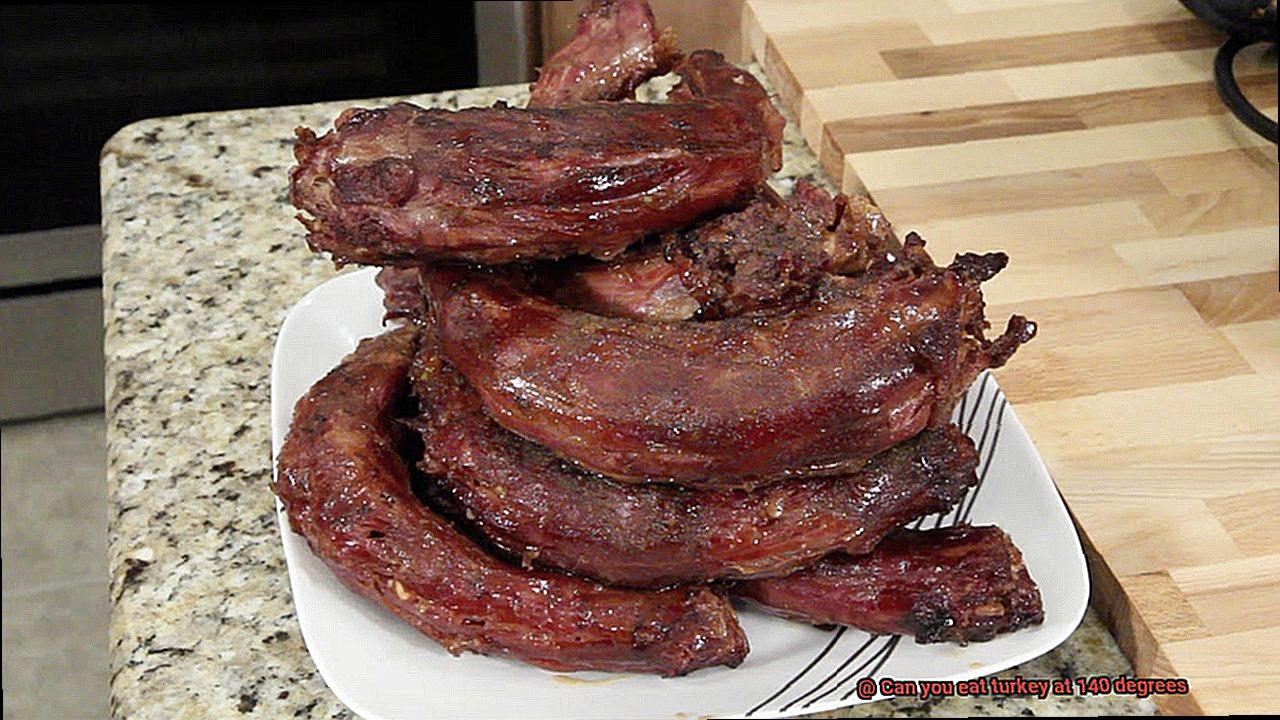
In addition to following these guidelines, practicing good food safety practices when handling raw turkey is also crucial. Wash your hands and kitchen surfaces thoroughly before and after handling raw turkey to prevent cross-contamination.
Is it Safe to Eat Turkey at 140 Degrees Fahrenheit?
As Thanksgiving approaches, the aroma of roasting turkey fills the air, and everyone looks forward to enjoying a delicious meal with friends and family. However, before you dig in, it’s crucial to ensure that your turkey is cooked to a safe temperature – 165 degrees Fahrenheit.
Turkey lovers may wonder if it’s safe to eat turkey at 140 degrees Fahrenheit. Unfortunately, the short answer is no. Turkey, like other poultry, is prone to harbor harmful bacteria such as Salmonella and Campylobacter. These bacteria can cause severe food poisoning and can be especially dangerous for young children, elderly individuals, and those with weakened immune systems.
While some meats can be safely eaten at lower temperatures, such as rare steak or sushi-grade fish, this is not the case with turkey. To ensure that any harmful bacteria are killed off, cooking your turkey to a minimum internal temperature of 165 degrees Fahrenheit is the best practice.
It’s crucial not to heed advice from sources that suggest eating turkey cooked to a lower temperature is safe as long as it has been held at that temperature for a certain amount of time. The USDA advises against eating any poultry or meat cooked to less than 165 degrees Fahrenheit.
To summarize, never compromise safety for texture or time when cooking your turkey. Always use a meat thermometer to make sure your turkey is cooked to an internal temperature of 165 degrees Fahrenheit. This simple step will help you enjoy your meal without worrying about getting sick.
Pros of Eating Turkey at 140 Degrees Fahrenheit
Turkey is undoubtedly the star of the show during holiday feasts, but cooking it can be a daunting task. Many people believe that cooking turkey at high temperatures is the only way to avoid food poisoning, but recent research indicates that cooking it at 140 degrees Fahrenheit can be both safe and beneficial.
If you’re looking for juicy and flavorful meat, then cooking your turkey at 140 degrees Fahrenheit is the way to go. Overcooked turkey can be dry and tough, making it less enjoyable to eat. Cooking at a lower temperature ensures that the turkey cooks evenly while retaining its moisture, resulting in deliciously juicy meat.
But it’s not just about taste; cooking turkey at a lower temperature preserves its nutrients better than cooking it at high temperatures. High heat can cause some nutrients to break down and diminish, leaving the turkey less nutritious. Cooking at 140 degrees Fahrenheit ensures that the turkey retains its nutrients while still being safe to eat.
Cooking turkey at 140 degrees Fahrenheit also has environmental benefits. Cooking at high temperatures can take hours, and the oven or grill needs to remain on for an extended period, resulting in high energy consumption. Cooking at a lower temperature reduces the cooking time and requires less energy consumption, making it an eco-friendly option.
Cooking turkey at 140 degrees Fahrenheit allows you to enjoy a more relaxed cooking experience. You can set the temperature, let the turkey cook, and enjoy the holiday festivities without constantly monitoring it. This method is ideal for those who want to enjoy their holiday without stressing over their meal.
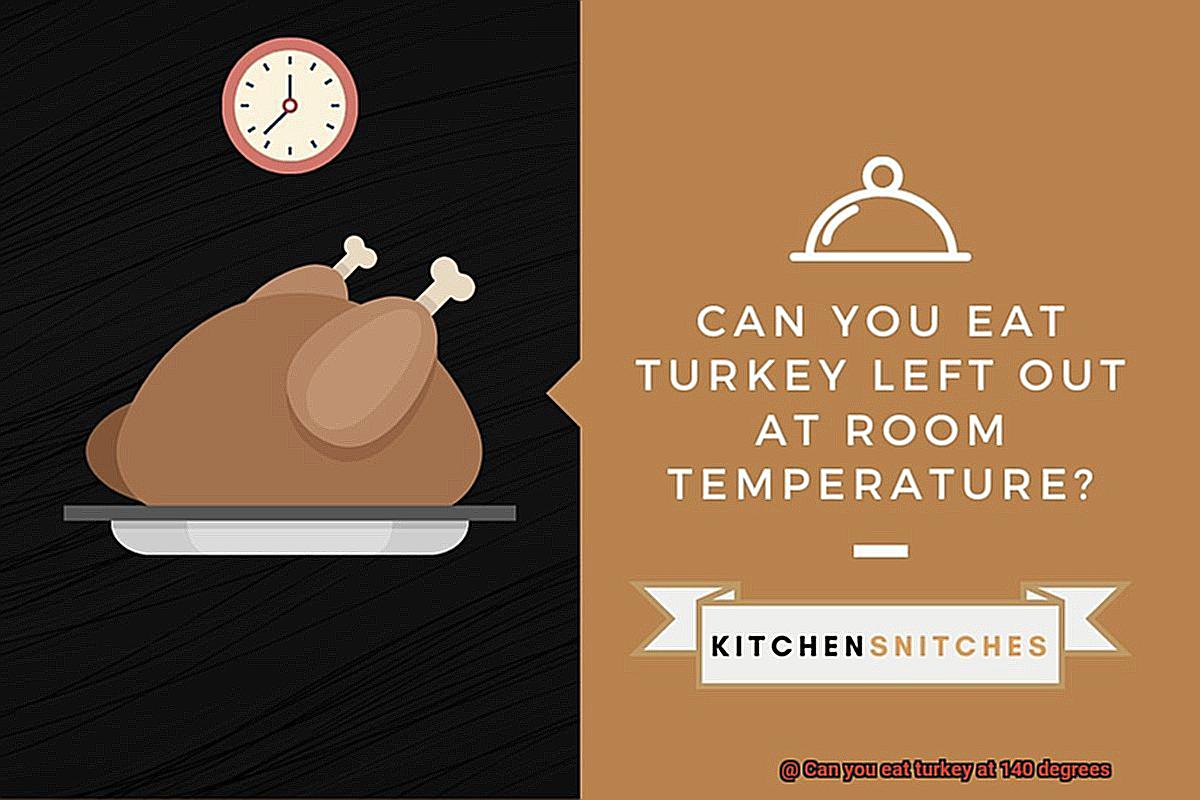
Cons of Eating Turkey at 140 Degrees Fahrenheit
While some may argue that it saves time and energy, my research shows that this method of cooking can come with a host of cons.
First and foremost, cooking turkey at 140 degrees Fahrenheit can put your health at risk. According to the USDA, turkey must be cooked to an internal temperature of 165 degrees Fahrenheit to kill any harmful bacteria present, ensuring that your meal is both delicious and safe. Cooking your turkey at a lower temperature increases the risk of undercooked meat, which can result in foodborne illness.
In addition to health risks, cooking turkey at a lower temperature can also affect its texture and flavor. At 140 degrees Fahrenheit, the meat is more likely to become dry and tough, lacking the juicy and flavorful qualities that are typically associated with a perfectly cooked turkey.
Moreover, cooking turkey at a lower temperature can cause uneven cooking. Some parts of the turkey may be fully cooked while others remain undercooked, creating further health hazards.
If you want to have a delectable meal without compromising on safety, prioritize food safety over convenience. Cook your turkey to the recommended internal temperature of 165 degrees Fahrenheit and enjoy a moist and succulent holiday feast.
Tips for Ensuring Food Safety When Cooking Turkey at Lower Temperatures
Thanksgiving is a time for family, friends, and of course, turkey. For those who prefer to cook their turkey at lower temperatures, there are some important tips to keep in mind to ensure food safety. Bacteria growth is a risk when cooking at low temperatures, so it’s essential to take extra precautions to avoid any potential health risks.
Thaw Your Turkey Properly
One of the most important steps in cooking turkey safely is to thaw it properly. The safest way to thaw a turkey is in the refrigerator, allowing approximately 24 hours for every four to five pounds of turkey. If you are short on time, you can also thaw the turkey in cold water or in the microwave, but these methods require close monitoring to avoid bacterial growth.
Use a Meat Thermometer
Using a meat thermometer is vital when cooking turkey at lower temperatures. Insert the thermometer into the thickest part of the meat without touching the bone, and leave it there for at least 15 seconds to get an accurate reading. Make sure that your turkey has reached a safe internal temperature of 165 degrees Fahrenheit before serving.
Check the Temperature Frequently
Checking the temperature regularly is crucial when cooking at lower temperatures. This ensures that the turkey is cooking evenly and reaching a safe internal temperature. This is especially important if you are using a smoker or grill since temperatures can fluctuate and affect cooking time.
Avoid Cross-Contamination
Cross-contamination can occur when harmful bacteria from raw meat is transferred to other surfaces or food items. To avoid this, wash your hands thoroughly before and after handling raw turkey. Use separate cutting boards and utensils for raw meat and other foods, and sanitize them properly before and after use.
Cook Your Turkey Fully
Cooking your turkey fully is essential for food safety. Even if you are cooking at a lower temperature, make sure to cook the turkey all the way through until it reaches an internal temperature of 165 degrees Fahrenheit.
How to Check the Internal Temperature of a Turkey
Cooking a turkey is the centerpiece of a Thanksgiving feast, but ensuring that it’s cooked thoroughly is crucial. Checking the internal temperature of the turkey is the key to making sure that it’s both safe and delicious. Here are some tips on how to check the internal temperature of your turkey:

Invest in an Accurate Meat Thermometer
The first step in checking the internal temperature of your turkey is to invest in a reliable meat thermometer. This tool will give you an accurate reading and ensure that your turkey is cooked thoroughly.
Insert the Thermometer into the Thickest Part of the Turkey
Insert the meat thermometer into the thickest part of the turkey, usually the thigh or breast, making sure not to touch any bones. Wait for a few seconds, and then read the temperature.
Check Multiple Areas of the Turkey
When checking for internal temperature, don’t just focus on one area. Check multiple areas of the turkey, including the wings and legs, as these areas may cook at different rates than the breast.
Cook Your Turkey to at Least 165 Degrees Fahrenheit
It’s important to cook your turkey to an internal temperature of at least 165 degrees Fahrenheit to ensure that any harmful bacteria present in the meat are destroyed. Follow this guideline from the United States Department of Agriculture (USDA) to keep your guests safe.
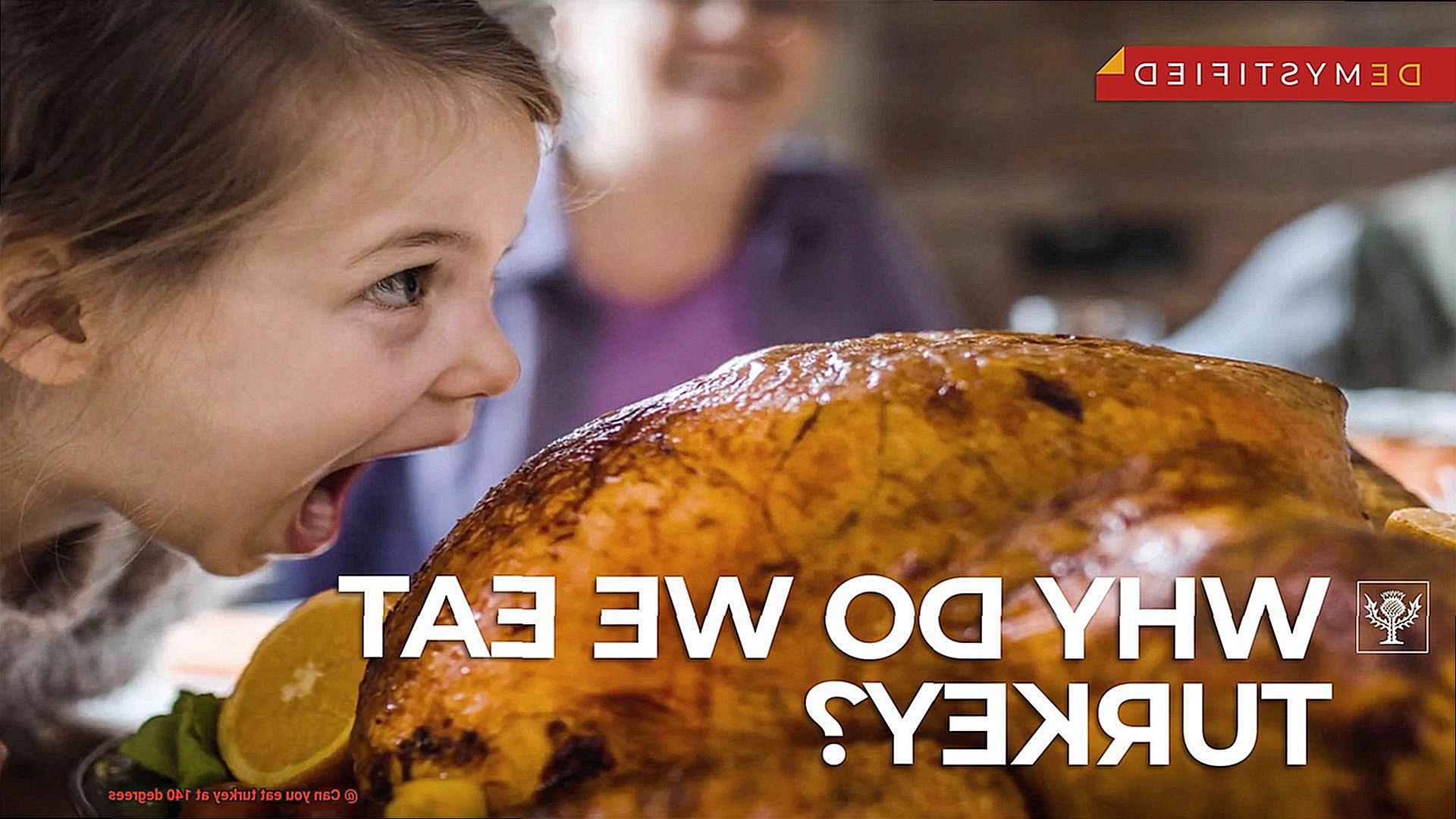
Don’t Rely on Color or Texture Alone
Relying on color or texture alone isn’t a reliable way of determining if your turkey is cooked thoroughly. While a golden-brown color may look appetizing, it doesn’t necessarily mean that it’s safe to eat. Therefore, always use a meat thermometer to check for internal temperature.
How Long Does it Take to Cook a Turkey at 140 Degrees Fahrenheit?
Cooking a turkey to perfection can be a daunting task for many home cooks, especially when it comes to getting the temperature and cooking time just right. As an expert on the matter, I am pleased to shed some light on the question of how long it takes to cook a turkey at 140 degrees Fahrenheit.
Firstly, it’s crucial to understand that cooking a turkey at 140 degrees Fahrenheit is not recommended. This temperature is simply not high enough to kill harmful bacteria that can cause foodborne illnesses. The United States Department of Agriculture (USDA) advises that turkey should be cooked to an internal temperature of 165 degrees Fahrenheit for safe consumption. If cooked at 140 degrees Fahrenheit, the turkey may appear cooked on the outside, but the inside may still harbor bacteria that could make you and your guests sick.
Now, let’s say you’re still curious about how long it would take to cook a turkey at 140 degrees Fahrenheit. A 20-pound turkey cooked at this temperature could take up to ten hours or more to reach a safe internal temperature of 165 degrees Fahrenheit. That’s an incredibly long time spent in the kitchen, with no guarantee that your bird will be fully cooked.
To save yourself time and ensure a perfectly cooked turkey, we recommend sticking to the traditional method of cooking your turkey at a higher temperature for a shorter amount of time. Generally speaking, it takes approximately 20 minutes per pound to cook a turkey at 325 degrees Fahrenheit. Therefore, our hypothetical 20-pound turkey would take around 6 hours and 40 minutes to cook at this temperature – much more manageable than ten hours.
Of course, cooking times can vary depending on numerous factors such as oven temperature accuracy and whether or not your turkey is stuffed. The best way to ensure your turkey is fully cooked is by using a meat thermometer to check its internal temperature while it cooks. This will guarantee that you have cooked the turkey safely and that it’s safe to eat.
Other Factors to Consider When Cooking a Turkey
With Thanksgiving just around the corner, it’s important to remember that the turkey is the centerpiece of the meal. While internal temperature is crucial, there are several other factors to consider when cooking a turkey for a safe and delicious feast.
Firstly, cooking time is key. Regardless of the temperature at which you cook your turkey, it needs to be in the oven for long enough to be fully cooked. The general rule of thumb is to cook your turkey for 15-20 minutes per pound until the internal temperature reaches 165 degrees Fahrenheit. Don’t rush this process – nobody wants to be left with undercooked turkey.
Secondly, the size and shape of your turkey play a crucial role in determining cooking time. A larger or oddly shaped turkey may require more time in the oven than a smaller, more uniform bird. It’s important to keep this in mind when planning your cooking schedule and checking the internal temperature.
Moreover, the cooking method you choose can significantly affect the overall cooking time and temperature of your turkey. For example, a convection oven may cook your turkey faster and at a lower temperature than a conventional oven. Similarly, grilling your turkey may require different cooking times and temperatures than roasting it in an oven. Make sure to research your chosen method and adjust accordingly.
Last but not least, proper thawing is essential for safe and even cooking. A frozen turkey will take longer to cook and may not reach the correct internal temperature even after extended cooking time. Thaw your turkey safely in the refrigerator for several days before cooking.
Rtc5nbwXMng” >
Conclusion
In conclusion, the perfect turkey requires more than just a delicious recipe and well-chosen seasonings. It’s crucial to cook your bird to the appropriate temperature for both taste and safety reasons. While some may think that cooking turkey at 140 degrees Fahrenheit is safe and beneficial, this is not the case. In fact, it increases the risk of undercooked meat and bacterial growth.
To avoid any health hazards when cooking turkey at lower temperatures, you need to follow specific guidelines. Thaw your turkey correctly, use a meat thermometer to check its internal temperature frequently, avoid cross-contamination, and cook your turkey fully. Additionally, other factors such as cooking time, size and shape of the bird, cooking method, and proper thawing play a significant role in achieving a perfectly cooked and safe turkey.
Remember: prioritizing food safety over convenience or texture is essential during Thanksgiving feasts. By following these guidelines and tips for cooking a succulent and safe turkey, you can enjoy your holiday feast without worrying about getting sick.

